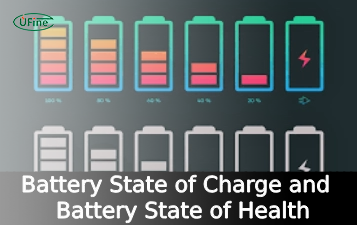
- Part 1. What is a B-size battery?
- Part 2. Why are there no B-size batteries in stores?
- Part 3. A brief history of battery naming standards
- Part 4. What killed the B battery? A case of poor timing
- Part 5. Are B-size batteries still made today?
- Part 6. How lithium batteries filled the gap
- Part 7. The rise of custom battery engineering
- Part 8. How lithium batteries outperform alkaline batteries
- Part 9. Common modern alternatives to B batteries
- Part 10. Will the B battery ever make a comeback?
- Part 11. FAQs about B-size batteries
Why are there no B-size batteries anymore? That question sparks curiosity for anyone who’s browsed a battery aisle and noticed something missing. We see AA, AAA, C, D, and even 9V, but no B batteries exist. What happened to that mysterious middle child of the battery family?
Let’s explore the story of the B-size battery, why it faded away, and how lithium battery technology has emerged to fill that gap and completely transform how we power our devices today.
Part 1. What is a B-size battery?
A B-size battery is a cylindrical, 1.5-volt cell that falls between the A and C batteries in size. It’s thicker than an AA but slimmer than a C cell. While rarely seen today, it once existed in early electronics, particularly radios, flashlights, and military equipment.
These batteries were part of a naming system that once went from A to D, where each letter indicated a different size. So why did the B battery vanish, while AAs and Ds still go strong?
Part 2. Why are there no B-size batteries in stores?
Why are B-size batteries missing from store shelves today?
The simple answer: they fell out of demand.
As technology advanced, devices became more compact and efficient. Electronics started requiring smaller batteries (like AAA) or higher-capacity cells (like D or lithium-ion). Unfortunately, B batteries didn’t fit either niche.
Retailers prioritize stocking products that sell consistently, and B batteries weren’t flying off the shelves. So manufacturers stopped producing them for the consumer market. Over time, they disappeared from mainstream retail.
Part 3. A brief history of battery naming standards
To understand the B battery’s disappearance, you need to know how battery sizes came to be.
In the early 20th century, battery sizes were standardized by the National Electrical Manufacturers Association (NEMA) and the International Electrotechnical Commission (IEC). The system used letters to represent relative size and power capacity:
- A: Small but not widely used today
- AA: Slightly smaller than A, became standard for portable electronics
- AAA: Even smaller, now used in remotes and compact devices
- B: Mid-sized, never gained popularity
- C: Larger and used in toys or medium-sized tools
- D: Big and powerful—ideal for flashlights and radios
Manufacturers began designing products around widely available battery sizes as electronics evolved to streamline production and reduce costs. The B battery didn’t cut.
Part 4. What killed the B battery? A case of poor timing
The B battery’s downfall wasn’t because it was faulty or underpowered. It worked just fine. The problem was timing.
Electrical devices began shrinking during the mid-1900s. The transistor revolution made electronics smaller and more efficient. Devices that once needed large batteries could now run on AA or AAA cells. Meanwhile, power tools and industrial equipment leaned on D cells or specialized battery packs.
Caught in the middle, B batteries weren’t powerful enough for large gear and too bulky for small devices, so manufacturers stopped designing around them.
Part 5. Are B-size batteries still made today?
Yes, but only in limited quantities.
While B batteries have disappeared from consumer stores, they still exist in industrial and specialty markets. Some military equipment, scientific devices, and vintage electronics still call for them. You might find them online through specialty retailers. Still, mainstream brands like Duracell or Energizer no longer produce B-size batteries.
Even in these rare cases, users often retrofit devices to use more common battery sizes or rechargeable lithium alternatives.
Part 6. How lithium batteries filled the gap
So what took the place of the B battery?
The answer is lithium—a game-changing technology that has redefined portable power. Unlike traditional alkaline batteries, lithium cells are:
- Lighter
- More energy-dense
- Longer-lasting
- Rechargeable
- Capable of handling extreme temperatures
Thanks to these features, lithium batteries are now used in:
- Smartphones
- Laptops
- Smart home devices
- Power tools
- Electric cars
- Solar power systems
The flexibility of lithium chemistry means that battery designers are no longer tied to standard sizes. They can build custom shapes and capacities for specific devices, eliminating the need for awkward legacy sizes like B.
Part 7. The rise of custom battery engineering
One of lithium technology’s biggest strengths is modularity. Engineers can now design batteries in flat, curved, or ultra-thin shapes, perfectly tailored to a product’s size and power demands.
For example:
- A smartwatch might use a coin-cell lithium battery.
- An electric vehicle uses hundreds of lithium-ion cells arranged in packs.
- A drone may use a high-discharge lithium-polymer (Li-Po) battery.
This level of customization has made standard cylindrical batteries like the B size less relevant in modern device design.
Part 8. How lithium batteries outperform alkaline batteries
Here’s a breakdown of why lithium is superior to alkaline technology like the B battery:
| Feature | Alkaline (e.g., B Size) | Lithium |
|---|---|---|
| Voltage | 1.5V | 3.0V or higher |
| Rechargeable | Usually No | Yes (Li-ion, Li-Po) |
| Shelf Life | 3–5 years | 10+ years |
| Weight | Heavier | Lighter |
| Temperature Range | Limited | Wide (-40°C to 60°C) |
| Energy Density | Low to Moderate | High |
Thanks to these advantages, lithium has become the go-to chemistry for modern electronics.
Part 9. Common modern alternatives to B batteries
If you’re searching for a replacement or equivalent to a B battery, here are some options:
- C-size alkaline batteries: Slightly larger, often compatible with old B-battery devices.
- 18650 lithium-ion cells: Common in flashlights and DIY electronics.
- 14500 lithium cells: Similar in size to AA but with higher voltage.
- Custom lithium battery packs: Designed for specific projects or devices.
Adapters and converters are also available to retrofit older devices to use modern cells safely.
Part 10. Will the B battery ever make a comeback?
It’s unlikely—and unnecessary.
With lithium batteries offering greater flexibility, better efficiency, and longer lifespans, there’s no practical reason for manufacturers to return to the B-size format.
Instead, future battery development is focused on:
- Solid-state batteries: Safer and more compact than today’s lithium-ion.
- Graphene-enhanced cells: Faster charging and higher capacity.
- Sodium-ion batteries: A potential low-cost, eco-friendly alternative.
In this evolving landscape, standardized battery sizes are becoming less important. What matters now is energy density, charge cycles, and form factor.
Part 11. FAQs about B-size batteries
Why are there no B-size batteries in stores anymore?
They were phased out due to low demand and poor compatibility with modern electronics, and they were replaced by AA, C, and lithium-based options.
Can I still buy B batteries?
Yes, but only from specialty or industrial suppliers. Most consumer retailers no longer stock them.
What devices use B batteries?
Older flashlights, vintage radios, and some military gear. Today, these devices are either obsolete or retrofitted with alternatives.
What is the modern equivalent of a B battery?
C-size batteries or 18650 lithium-ion cells are often used as substitutes, depending on voltage and size requirements.
Why are lithium batteries better than B batteries?
They last longer, weigh less, have higher energy density, and are rechargeable, making them ideal for modern electronics.
Related Tags:
More Articles

Battery State of Charge and Battery State of Health
Battery SoC vs. SoH explained: Learn professional methods to measure charge levels, test health status, and optimize battery performance for longer lifespan.
Difference Between 18650, 26650, and 21700 Batteries
What’s the difference between 18650, 21700, and 26650 batteries? Compare size, capacity, and performance to find the best lithium battery for your device.
LFP Battery Vs. LTO Battery: A Detailed Comparison
Compare LFP (LiFePO4) and LTO (Lithium Titanate) batteries by energy density, lifespan, safety, cost, and uses in EVs, solar storage, and backup power.
Compare 18650 battery types: Li-ion, LiFePO4, and LiPo. Key specs (voltage/capacity) and best uses for vapes, flashlights, EV batteries.
How to Distinguish Between Grade A, Grade B, and Grade C LiFePO4 cells?
Explore the differences between Grade A, B, and C LiFePO4 cells and learn how to choose the right one for electric vehicles, solar storage, or backup power.



